Imaging More Than the Boltzmann Distribution: Hyperpolarised Gas Imaging
Oral
Body: Breast, Chest, Abdomen, Pelvis
Wednesday, 20 June 2018
| W05/06 |
16:15 - 18:15 |
Moderators: Talissa Altes, Sean Fain |
16:15
 |
0963.
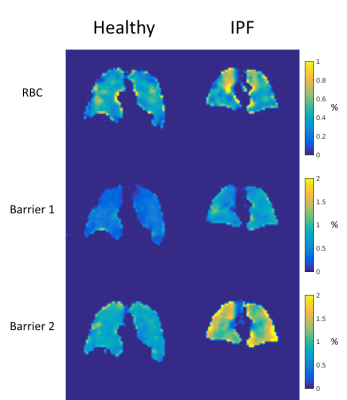 |
 Spectroscopic Imaging of Dissolved-phase 129Xe in the Lungs Using a 3-Resonance Model Spectroscopic Imaging of Dissolved-phase 129Xe in the Lungs Using a 3-Resonance Model
Jeff Kammerman, Andrew Hahn, Elianna Bier, Bastiaan Driehuys, Sean Fain
Spectroscopic imaging of the hyperpolarized xenon-129 dissolved in the pulmonary tissues and blood can probe regional gas exchange within the lung. Recent work in whole lung spectroscopy has identified a new, third resonance in the dissolved-phase spectrum. In this work, we develop an iterative, model based reconstruction to separately image the three dissolved-phase components. Regional maps of the three dissolved-phase components are compared in healthy subjects and patients with idiopathic pulmonary fibrosis.
|
16:27
 |
0964.
 |
 Hyperpolarized 129Xe Multiple Breath Washout MRI in Pediatric Cystic Fibrosis Hyperpolarized 129Xe Multiple Breath Washout MRI in Pediatric Cystic Fibrosis
Marcus Couch, Felipe Morgado, Nikhil Kanhere, Krzysztof Kowalik, Jonathan Rayment, Felix Ratjen, Giles Santyr
The lung clearance index, measured using N2 multiple breath washout (MBW), provides an indicator of ventilation heterogeneity but lacks regional information. The combination of MBW and hyperpolarized 129Xe MRI can potentially provide measurements of ventilation heterogeneity that include both spatial and temporal information. MBW imaging was performed following an initial 129Xe inhalation and during multiple breath-holds of room air to measure the 129Xe washout. Fractional ventilation and coefficient of variation maps measured in pediatric cystic fibrosis participants show elevated ventilation heterogeneity compared to age-matched healthy controls.
|
16:39
 |
0965.
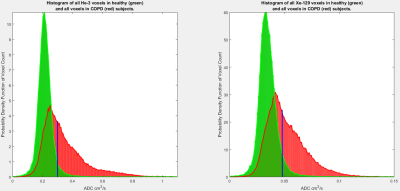 |
 Emphysema Index based on Hyperpolarized He-3 and Xe-129 ADC Emphysema Index based on Hyperpolarized He-3 and Xe-129 ADC
Sina Tafti, William Garrison, John Mugler, Y Shim, Talissa Altes, Jaime Mata, Nicholas Tustison, Kun Qing, Eduard de Lange, Gordon Cates, G Miller
Emphysema index (EI) based on CT provides a quantitative measure of emphysema burden in patients with chronic obstructive pulmonary disease (COPD). Diffusion-weighted MRI of inhaled hyperpolarized gases also provides a method for detecting emphysema, as elevated ADC values indicate airspace enlargement due to emphysematous destruction of alveolar walls. We propose an alternative formulation of EI based on He-3 or Xe-129 ADC measurements and compare their performance in characterizing emphysema severity with that of CT-EI. Our results suggest that ADC-EI may provide a useful quantitative measure of emphysema burden in patients with COPD that is more sensitive to early stages of emphysema than CT-EI.
|
16:51
|
0966.
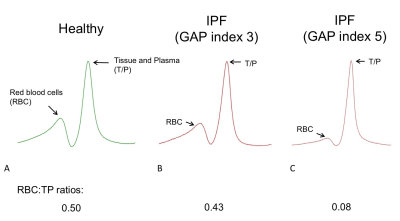 |
 Hyperpolarized 129Xe MR spectroscopy detects short-term changes in lung gas exchange efficiency in idiopathic pulmonary fibrosis Hyperpolarized 129Xe MR spectroscopy detects short-term changes in lung gas exchange efficiency in idiopathic pulmonary fibrosis
Nicholas Weatherley, Neil Stewart, Graham Norquay, Ho-Fung Chan, Oliver Rodgers, Madhwesha Rao, Guilhem Collier , Helen Marshall, Matthew Austin, Laurie Smith, Stephen Renshaw, Stephen Bianchi, Jim Wild
Idiopathic pulmonary fibrosis (IPF), once thought of as an orphan lung disease, is now a frontrunner in respiratory research. However, progress is hampered by a lack of sensitive biomarkers. Hyperpolarized xenon MR spectroscopy has demonstrated sensitivity to gas exchange in IPF and is emerging as a feasible imaging biomarker of disease. Here, we demonstrate that this methodology has high reproducibility in the disease state, correlates with clinical outcomes and demonstrates a decline in gas transfer efficiency in the lung over six months in spite of static pulmonary function test metrics.
|
17:03
|
0967.
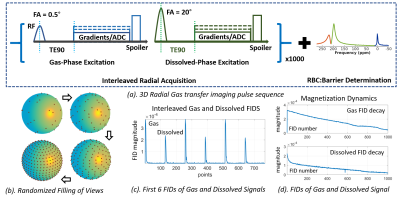 |
 Hyperpolarized 129Xe Gas Exchange MRI: The Transition from 1.5 to 3 Tesla Hyperpolarized 129Xe Gas Exchange MRI: The Transition from 1.5 to 3 Tesla
Ziyi Wang, Mu He, Elianna Bier, Brian Soher, Joseph Mammarappallil, Sudarshan Rajagopal, Yuh-Chin Huang, Bastiaan Driehuys
Hyperpolarized 129Xe is uniquely suited to imaging pulmonary functions by virtue of its solubility and abundant chemical shifts. Previous efforts established single-breath 3D imaging of 129Xe ventilation, barrier uptake and RBC transfer at 1.5 Tesla. As MR vendors are increasingly transitioning their multinuclear platforms to 3 Tesla, it becomes important to enable 129Xe gas exchange MRI at higher field strengths. Here we demonstrate that by careful measurement of spectral properties and optimization of RF and readout, short T2* can be overcome, and 129Xe gas exchange MRI with quantitative workflow is feasible and robust at 3 Tesla.
|
17:15
|
0968.
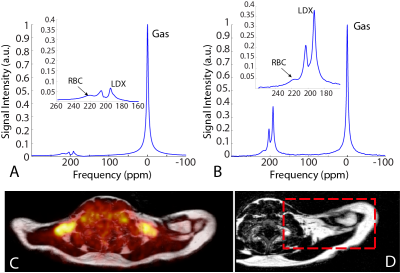 |
 Measurements of human brown adipose tissue temperature during cold exposure by hyperpolarized xenon MR thermometry Measurements of human brown adipose tissue temperature during cold exposure by hyperpolarized xenon MR thermometry
Rosa Tamara Branca, Le Zhang, Alex Burant, Michael Antonacci, Andrew McCallister, Laurence Katz
While temperature measurement represents the most direct way to measure BAT thermogenic function, temperature measurements by proton-based MR methods are confounded by magnetic susceptibility effects, which cannot be corrected for at the microscopic level. Here we report our first measurements of absolute BAT temperature in adult humans during cold exposure by hyperpolarized xenon gas MRI. These measurements represent the most direct way to measure thermogenic function in BAT.
|
17:27
|
0969.
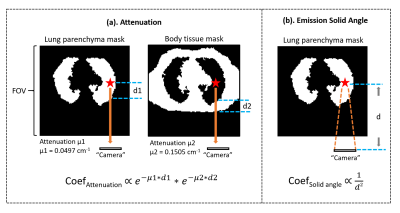 |
 Correlating 129Xe Gas Exchange MRI with 99mTc Perfusion Scintigraphy Correlating 129Xe Gas Exchange MRI with 99mTc Perfusion Scintigraphy
Ziyi Wang, Leith Rankine, Joseph Mammarappallil, Sudarshan Rajagopal, Bastiaan Driehuys
Hyperpolarized 129Xe MRI is emerging as a unique means of imaging pulmonary gas exchange, enabling separate 3D encoding of 129Xe in the gas-phase, interstitial barrier, and red blood cells (RBC). In patients where diffusion limitation is not significant, defects in RBC transfer and perfusion deficits should more closely reflect diminished capillary blood volume or perfusion limitation. Here we establish an initial approach to correlate RBC transfer images against an accepted perfusion imaging reference— 99mTc scintigraphy. We demonstrate in patients with pulmonary arterial hypertension and COPD that RBC transfer projections compare both qualitatively and quantitatively with 99mTc scintigraphy.
|
17:39
|
0970.
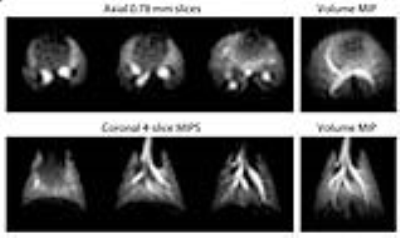 |
 An integrated preclinical platform for high-resolution 3D hyperpolarized 129Xe MRI at high field An integrated preclinical platform for high-resolution 3D hyperpolarized 129Xe MRI at high field
Rohan Virgincar, Bastiaan Driehuys, Jerry Dahlke, Scott Robertson, Nathann Morand, Yi Qi, Simone Degan, John Nouls
Hyperpolarized (HP) 129Xe MR imaging of lung function is beginning to find clinical application. This must be supported by preclinical imaging in well-characterized animal models. However, this capability is limited to a few sites, often involves only 2D projections, and is often done at non-standard, low field strengths. This work demonstrates the feasibility of preclinical 129Xe MRI at 7T, using an integrated gas delivery and physiological monitoring system and customized 3D radial acquisitions. We characterize the spectral structure of 129Xe in rats and demonstrate that despite the short T2* at high field strength, 3D gas exchange imaging should be feasible.
|
17:51
|
0971.
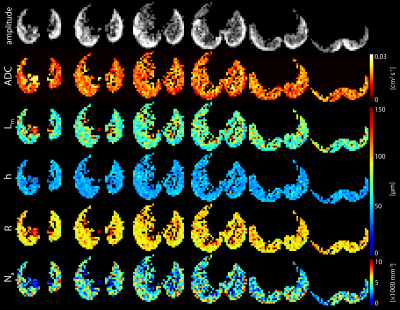 |
 In Vivo Hyperpolarized 129Xe Diffusion Morphometry of the Mouse Lung In Vivo Hyperpolarized 129Xe Diffusion Morphometry of the Mouse Lung
Matthew Freeman, Teckla Akinyi, Jinbang Guo, Cory Davis, James Quirk, Brian Varisco, Jason Woods, Zackary Cleveland
Hyperpolarized 129Xe diffusion morphometry allows the microstructural dimensions of the lungs to be measured noninvasively, providing a means to quantify normal alveolar growth and disease progression in disorders such as emphysema. In the preclinical setting, 129Xe diffusion morphometry holds the potential to provide insights into fundamental pulmonary biology and to assess the efficacy of potential therapies. However, to have the greatest impact on pulmonary biomedicine, this approach must be applied reliably to mouse models, where tools to investigate disease mechanisms are most highly developed. Here, we demonstrate the feasibility of high-resolution, 129Xe diffusion morphometry in living mice.
|
18:03
|
0972.
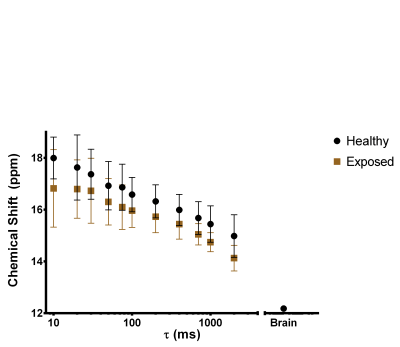 |
 Dependence of the Chemical Shift of 129Xe Dissolved in Red Blood Cells on Transit Time from the Lung Gas Exchange Region in Rats Dependence of the Chemical Shift of 129Xe Dissolved in Red Blood Cells on Transit Time from the Lung Gas Exchange Region in Rats
Yonni Friedlander, Brandon Zanette, Elaine Stirrat, Marcus Couch, Andrea Kassner, Giles Santyr
The chemical shift of 129Xe dissolved in red blood cells was measured at increasing transit times from the gas exchange region of the lungs of healthy rats and rats exposed to hyperoxia/hypoxia, a model of bronchopulmonary dysplasia. The results show that the chemical shift decreased with increasing transit times. Furthermore, the chemical shift was different between the healthy and exposed cohorts. A possible mechanism for this phenomenon based on changes in bulk magnetic susceptibility distal to the lungs is proposed.
|
|












